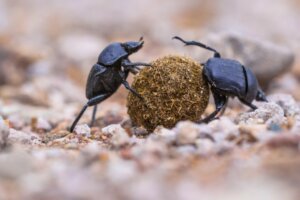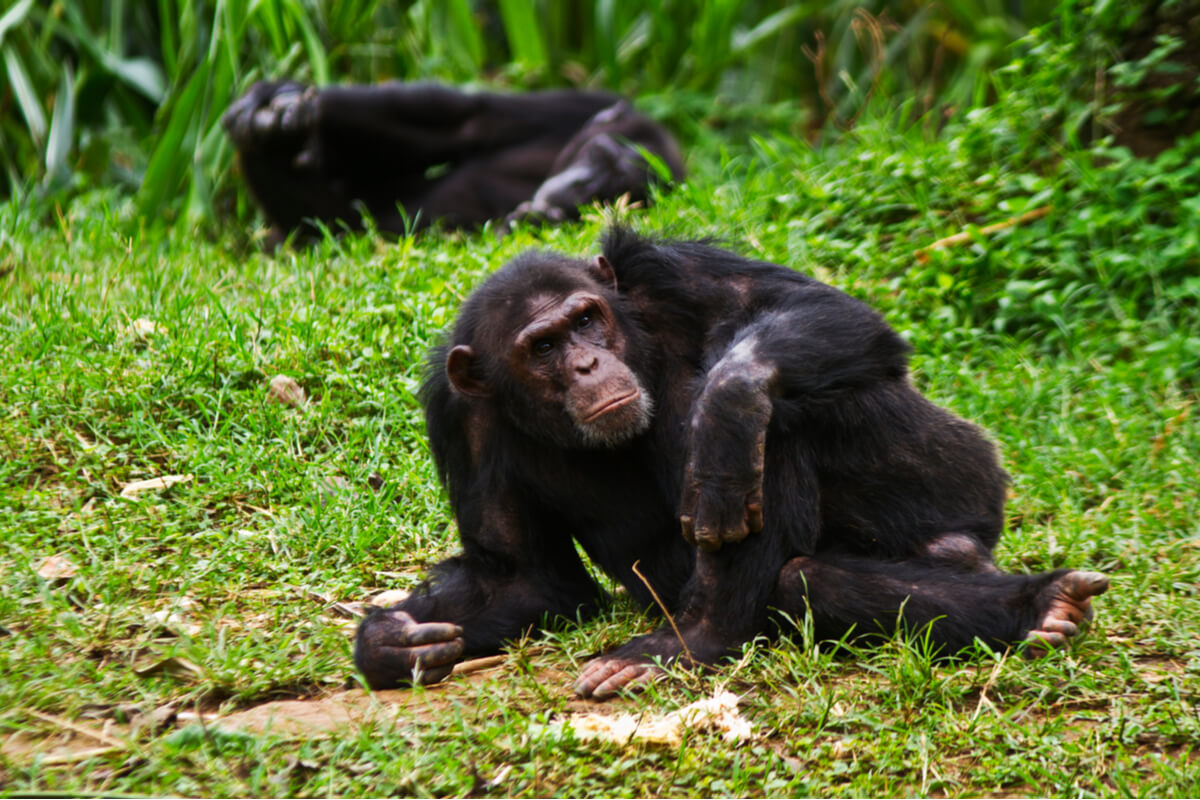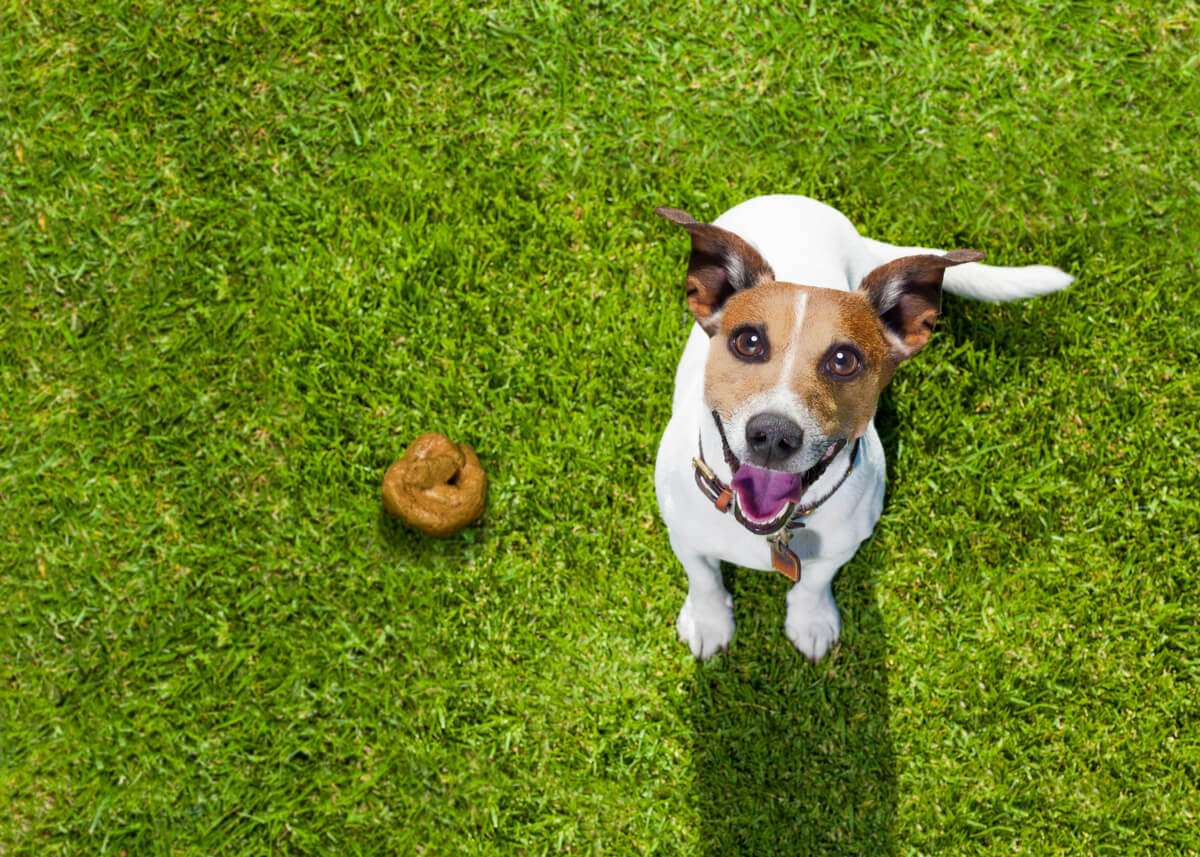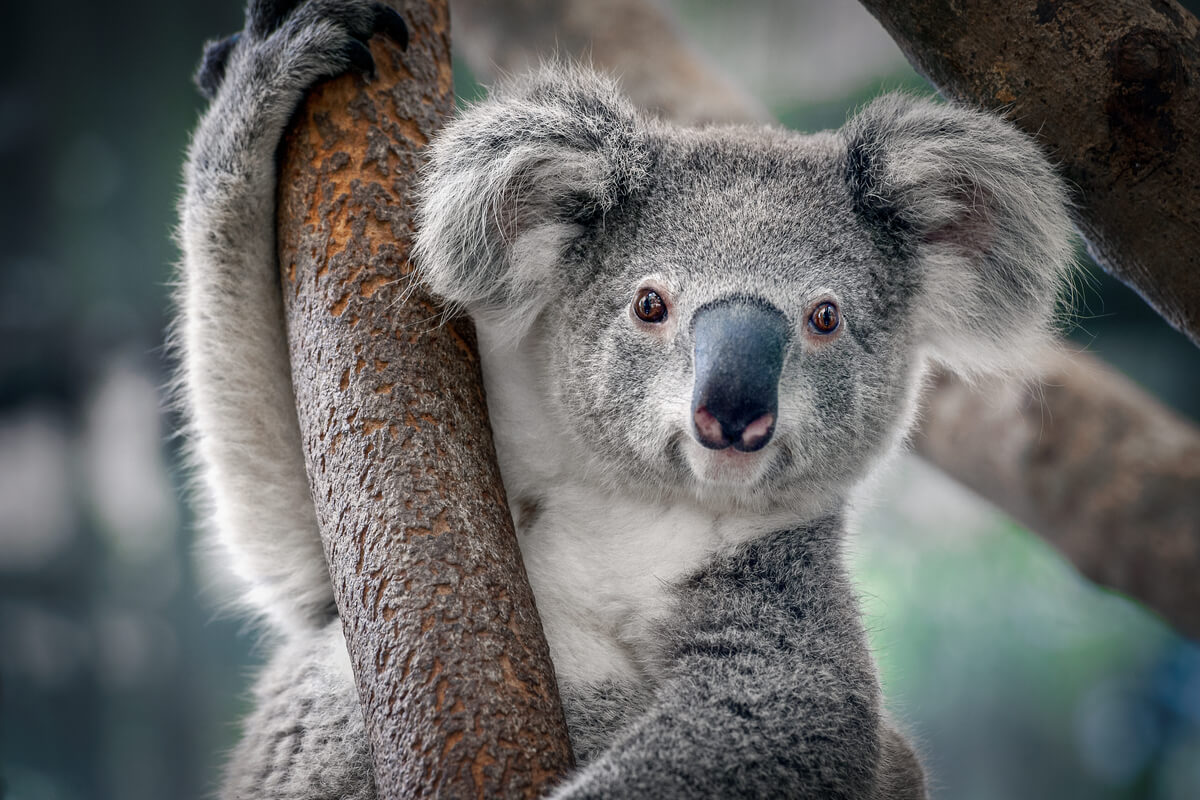4 Wild Animals that Practice Coprophagia

Coprophagia is a technique practiced by different species throughout the world. It is a little-known biological adaptation, which usually repulses humans. However, animals that resort to eating their own feces — or those of others — do so for a specific reason.
In the natural world, each species specializes in their own unique ecological niche. Some animals are responsible for transforming organic matter that no living being is going to reuse i.e their feces. If you want to know more about coprophagia, read on.
What is coprophagia?
Coprophagia is defined as the ingestion of feces or excrement and is a common behavior in some species of animals. The goal of coprophagia is to ingest essential nutrients that have not been digested as they pass through the digestive tract and would otherwise be wasted.
Only some living beings practice coprophagia as a form of natural food. Among them are both invertebrates and vertebrates. On the other hand, only those animals that feed exclusively or almost exclusively on the excrement of others, such as certain beetles, are considered true dung beetles.
There are also animals that eat other food but sometimes ingest their own feces. This is because their intestine cannot completely break down food and extract all the nutrients in one go. For that reason, they re-ingest the stool and digest it again a second time.
In addition, these animals, such as rabbits, expel 2 different types of feces, one that’s eaten and one that isn’t. The feces that can be eaten are called cecotropes or nocturnal feces.
What animals practice coprophagia?
Next up, we’ll look at some of the wild animals that practice coprophagia, both strictly and occasionally.
1. Rabbits
Rabbits consume a part of their own feces, specifically, the so-called cecotropes. These stools are soft and are made up of partially digested food, from which they extract nutrients.
Some species related to rabbits – such as guinea pigs – lack a sophisticated digestive system. For this reason, feces provide them with nutrients and vitamins, like hamsters, which reabsorb vitamin B and K thanks to coprophagia.

2. Chimpanzees
It has been observed that, on some occasions, chimpanzees feed on their feces. The reason they do it is the same as that of rabbits. This implies that the seeds they eat don’t give them all the nutrients in the first digestion. Therefore, they eat them again to be able to extract all their benefits! Bizarre but true!
This behavior has also been observed in gorillas, that can ingest their own excrement or that of other gorillas. On the other hand, apes and monkeys often ingest the excrement of other species.

3. Dung beetles
Dung beetles, on the other hand, feed on the excrement of other animals. Depending on whether they’re young or adult, they feed on one type of matter or another. Dung beetle hatchlings feed on raw material debris from solid droppings. This is because they don’t have specialized mouthparts with which to suck the liquid from this raw material.
Some species of dung beetle can use manure to build their homes, where they lay their eggs. In addition, this behavior has also been observed in other insects, such as flies and other dipteran larvae.

4. Dogs
Coprophagia can be seen as normal when performed by wild beings. However, when practiced by domestic animals such as dogs, people can be shocked. Coprophagia is a natural behavior, although it isn’t very common to observe it in dogs. Although it seems surprising, it’s believed that this behavior may be a habit learned from their mothers.
When mothers clean their cubs, they stimulate the perineal region, which causes the calf to urinate or defecate. The mother cleans the puppy, a behavior that he learns and can repeat throughout their life.
If owners are uncomfortable with this behavior, they can take steps to redirect it. For this reason, we recommend that you change your pet’s diet, collect its feces immediately, or carry out exercise routines for the dog.

Other mammals
Some species of mammals sporadically perform coprophagia to obtain bacteria that they don’t have. Elephant or koala calves ingest their mother’s droppings to incorporate what they need for their digestive tract, allowing the calves to digest the food they eat.
Another example is pigs, who like to eat feces. It seems that this practice is beneficial for the soil and water, that is, for their environment. When pigs ingest feces, they may be unconsciously practicing a tactic to save food and also produce less organic waste.
However, at the same time it increases the risks of contagion of diseases and viruses among them, since feces are a vehicle for the transmission of parasites.

Coprophagia is a common technique in the animal world, although the best-known examples are rabbits or rodents. In addition, this evolutionary strategy has a remarkable ecological importance, thanks to the action of dung beetles that fertilize the soil and accelerate the degradation of feces.
Coprophagia is a technique practiced by different species throughout the world. It is a little-known biological adaptation, which usually repulses humans. However, animals that resort to eating their own feces — or those of others — do so for a specific reason.
In the natural world, each species specializes in their own unique ecological niche. Some animals are responsible for transforming organic matter that no living being is going to reuse i.e their feces. If you want to know more about coprophagia, read on.
What is coprophagia?
Coprophagia is defined as the ingestion of feces or excrement and is a common behavior in some species of animals. The goal of coprophagia is to ingest essential nutrients that have not been digested as they pass through the digestive tract and would otherwise be wasted.
Only some living beings practice coprophagia as a form of natural food. Among them are both invertebrates and vertebrates. On the other hand, only those animals that feed exclusively or almost exclusively on the excrement of others, such as certain beetles, are considered true dung beetles.
There are also animals that eat other food but sometimes ingest their own feces. This is because their intestine cannot completely break down food and extract all the nutrients in one go. For that reason, they re-ingest the stool and digest it again a second time.
In addition, these animals, such as rabbits, expel 2 different types of feces, one that’s eaten and one that isn’t. The feces that can be eaten are called cecotropes or nocturnal feces.
What animals practice coprophagia?
Next up, we’ll look at some of the wild animals that practice coprophagia, both strictly and occasionally.
1. Rabbits
Rabbits consume a part of their own feces, specifically, the so-called cecotropes. These stools are soft and are made up of partially digested food, from which they extract nutrients.
Some species related to rabbits – such as guinea pigs – lack a sophisticated digestive system. For this reason, feces provide them with nutrients and vitamins, like hamsters, which reabsorb vitamin B and K thanks to coprophagia.

2. Chimpanzees
It has been observed that, on some occasions, chimpanzees feed on their feces. The reason they do it is the same as that of rabbits. This implies that the seeds they eat don’t give them all the nutrients in the first digestion. Therefore, they eat them again to be able to extract all their benefits! Bizarre but true!
This behavior has also been observed in gorillas, that can ingest their own excrement or that of other gorillas. On the other hand, apes and monkeys often ingest the excrement of other species.

3. Dung beetles
Dung beetles, on the other hand, feed on the excrement of other animals. Depending on whether they’re young or adult, they feed on one type of matter or another. Dung beetle hatchlings feed on raw material debris from solid droppings. This is because they don’t have specialized mouthparts with which to suck the liquid from this raw material.
Some species of dung beetle can use manure to build their homes, where they lay their eggs. In addition, this behavior has also been observed in other insects, such as flies and other dipteran larvae.

4. Dogs
Coprophagia can be seen as normal when performed by wild beings. However, when practiced by domestic animals such as dogs, people can be shocked. Coprophagia is a natural behavior, although it isn’t very common to observe it in dogs. Although it seems surprising, it’s believed that this behavior may be a habit learned from their mothers.
When mothers clean their cubs, they stimulate the perineal region, which causes the calf to urinate or defecate. The mother cleans the puppy, a behavior that he learns and can repeat throughout their life.
If owners are uncomfortable with this behavior, they can take steps to redirect it. For this reason, we recommend that you change your pet’s diet, collect its feces immediately, or carry out exercise routines for the dog.

Other mammals
Some species of mammals sporadically perform coprophagia to obtain bacteria that they don’t have. Elephant or koala calves ingest their mother’s droppings to incorporate what they need for their digestive tract, allowing the calves to digest the food they eat.
Another example is pigs, who like to eat feces. It seems that this practice is beneficial for the soil and water, that is, for their environment. When pigs ingest feces, they may be unconsciously practicing a tactic to save food and also produce less organic waste.
However, at the same time it increases the risks of contagion of diseases and viruses among them, since feces are a vehicle for the transmission of parasites.

Coprophagia is a common technique in the animal world, although the best-known examples are rabbits or rodents. In addition, this evolutionary strategy has a remarkable ecological importance, thanks to the action of dung beetles that fertilize the soil and accelerate the degradation of feces.
All cited sources were thoroughly reviewed by our team to ensure their quality, reliability, currency, and validity. The bibliography of this article was considered reliable and of academic or scientific accuracy.
-
Coprophagy – an overview | ScienceDirect Topics [Internet]. [citado 18 de marzo de 2020]. Disponible en: https://www.sciencedirect.com/topics/agricultural-and-biological-sciences/coprophagy
-
Orland Soave and C. Dan Brand. Coprophagy in animals: a review. Cornell Vet 1991; 81:357-364 [Internet]. Disponible en: https://babel.hathitrust.org/cgi/pt?id=coo.31924051143075&view=1up&seq=379
This text is provided for informational purposes only and does not replace consultation with a professional. If in doubt, consult your specialist.








